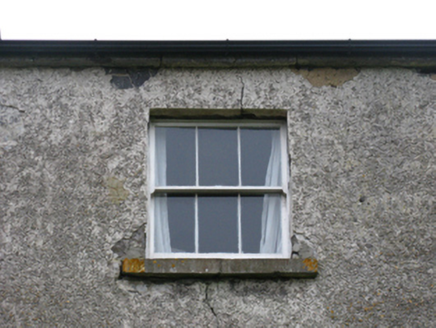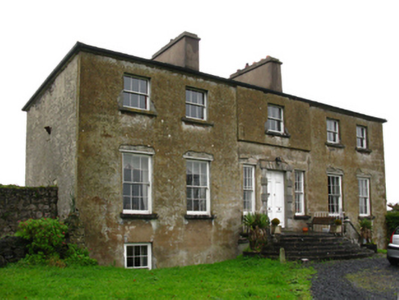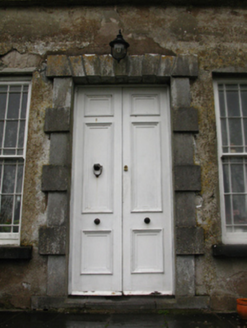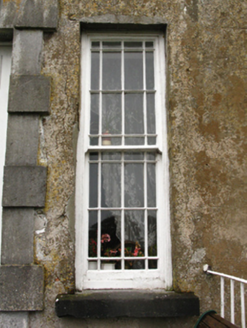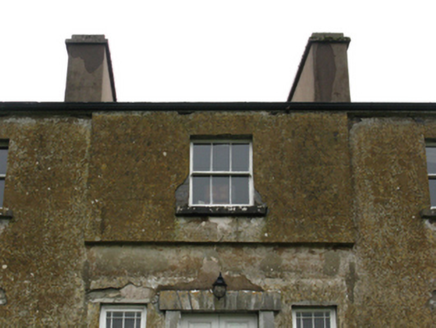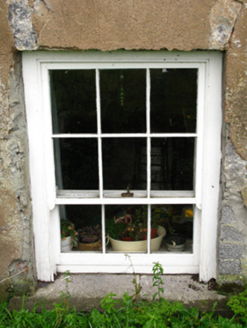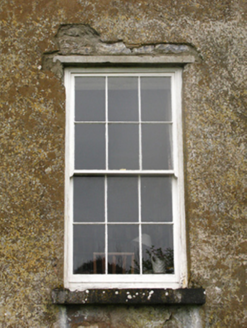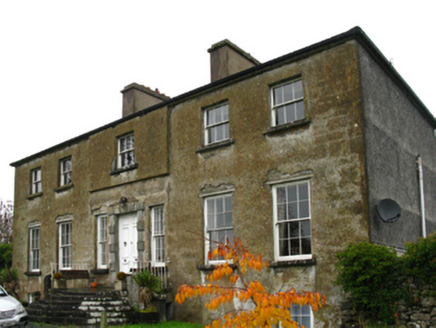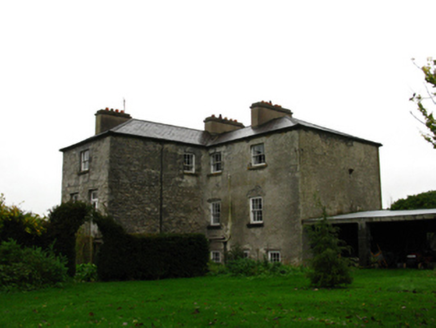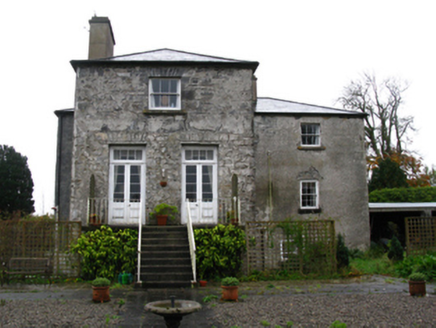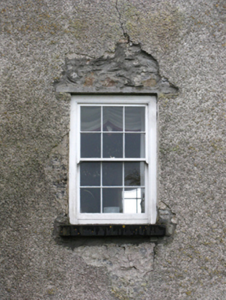Survey Data
Reg No
31307815
Rating
Regional
Categories of Special Interest
Architectural, Artistic, Historical, Social
Original Use
Country house
In Use As
Country house
Date
1700 - 1777
Coordinates
116948, 288547
Date Recorded
03/11/2010
Date Updated
--/--/--
Description
Detached five-bay two-storey over part raised basement country house, extant 1777, on a T-shaped plan centred on single-bay full-height breakfront; single-bay (two-bay deep) full-height return (north). Leased, 1789. Sold, 1905. Occupied, 1911. Sold, 1974. Resold, 1993. Restored, 1994. Hipped slate roof on a T-shaped plan centred on hipped slate roof (north) with clay ridge tiles, paired cement rendered central chimney stacks having cut-limestone stringcourses below capping supporting terracotta pots, and replacement uPVC rainwater goods on cut-limestone eaves retaining cast-iron octagonal or ogee hoppers and downpipes. Rendered, ruled and lined wall to front (south) elevation; fine roughcast surface finish (remainder) over coursed rubble limestone construction with concealed hammered or squared limestone flush quoins to corners. Square-headed central door opening approached by flight of six benchmark-inscribed cut-limestone steps between wrought iron railings with drag edged dragged cut-limestone block-and-start surround centred on keystone framing timber panelled double doors. Square-headed flanking window openings with drag edged dragged cut-limestone sills, and concealed dressings including reinforced concrete lintels framing four-over-four timber sash windows having margins. Square-headed window openings with drag edged dragged cut-limestone sills, and concealed dressings including reinforced concrete lintels framing six-over-three (basement), six-over-six (ground floor) or three-over-three (first floor) timber sash windows with cut-limestone voussoirs (north) framing six-over-six (ground floor) or three-over-three (first floor) timber sash windows having part exposed sash boxes. Interior including (ground floor): central hall retaining carved timber lugged surrounds to door openings framing timber panelled doors, and plasterwork cornice to ceiling; drawing room (west) retaining carved timber surround to door opening framing timber panelled door with carved timber surrounds to window openings framing timber panelled shutters on panelled risers; study (east) retaining carved timber surround to door opening framing timber panelled door with carved timber surrounds to window openings framing timber panelled shutters on panelled risers; dining room (north) retaining carved timber surround to door opening framing timber panelled door with carved timber surrounds to window openings framing timber panelled shutters on panelled risers; and carved timber surrounds to door openings to remainder framing timber panelled doors with carved timber surrounds to window openings framing timber panelled shutters on panelled risers. Set in landscaped grounds.
Appraisal
A country house representing an important component of the mid eighteenth-century domestic built heritage of the rural environs of Castlebar with the architectural value of the composition, one annotated as "Tallyhoa [of] Bell Esquire" by Taylor and Skinner (1778 pl. 79) and thereafter informally known as "The Lodge" (NUIG), confirmed by such attributes as the deliberate alignment maximising on scenic vistas overlooking landscaped grounds with a mountainous backdrop in the distance; the symmetrical or near-symmetrical footprint centred on a Classically-detailed doorcase demonstrating good quality workmanship; and the diminishing in scale of the openings on each floor producing a graduated visual impression. Having been successfully restored following a prolonged period of unoccupancy in the later twentieth century, the elementary form and massing survive intact together with substantial quantities of the original or sympathetically replicated fabric, both to the exterior and to the interior where contemporary joinery; chimneypieces; and sleek plasterwork refinements, all highlight the artistic potential of the composition. Furthermore, ruined outbuildings (extant 1895); and an adjacent walled garden (extant 1838), all continue to contribute positively to the group and setting values of a much depleted estate having historic connections with the O'Malley family including Charles O'Malley (d. 1849) 'late of Hawthorn Lodge County Mayo' (Calendars of Wills and Administrations 1886, 514); his sons Charles O'Malley JP (1798-1850; Lewis 1837 I, 223) and St. Clair O'Malley JP (1800-47; Wyse 1829, 245); and the Carson family including Robert Carson (1834-1928) and Arthur Carson (1888-1956).
